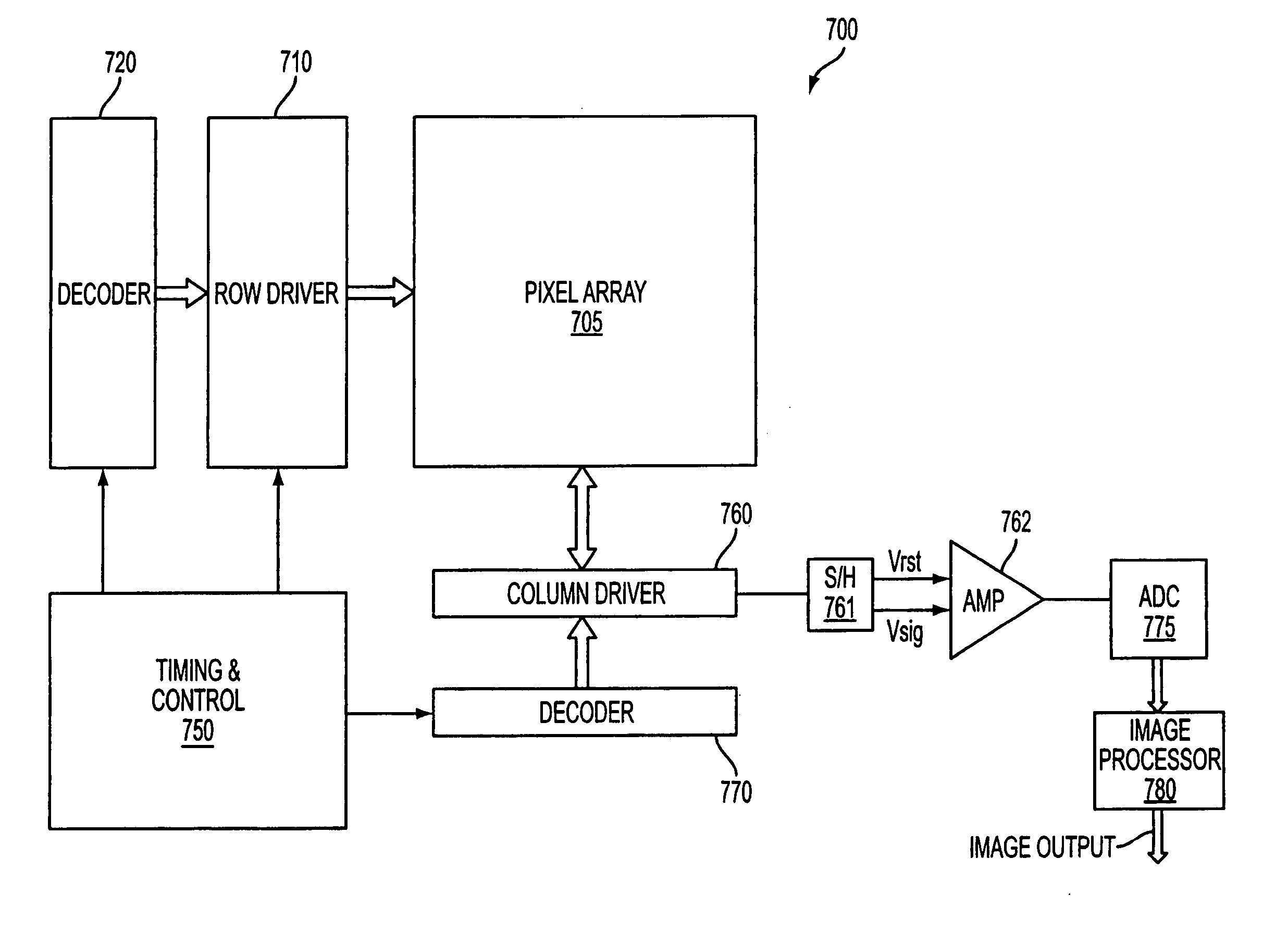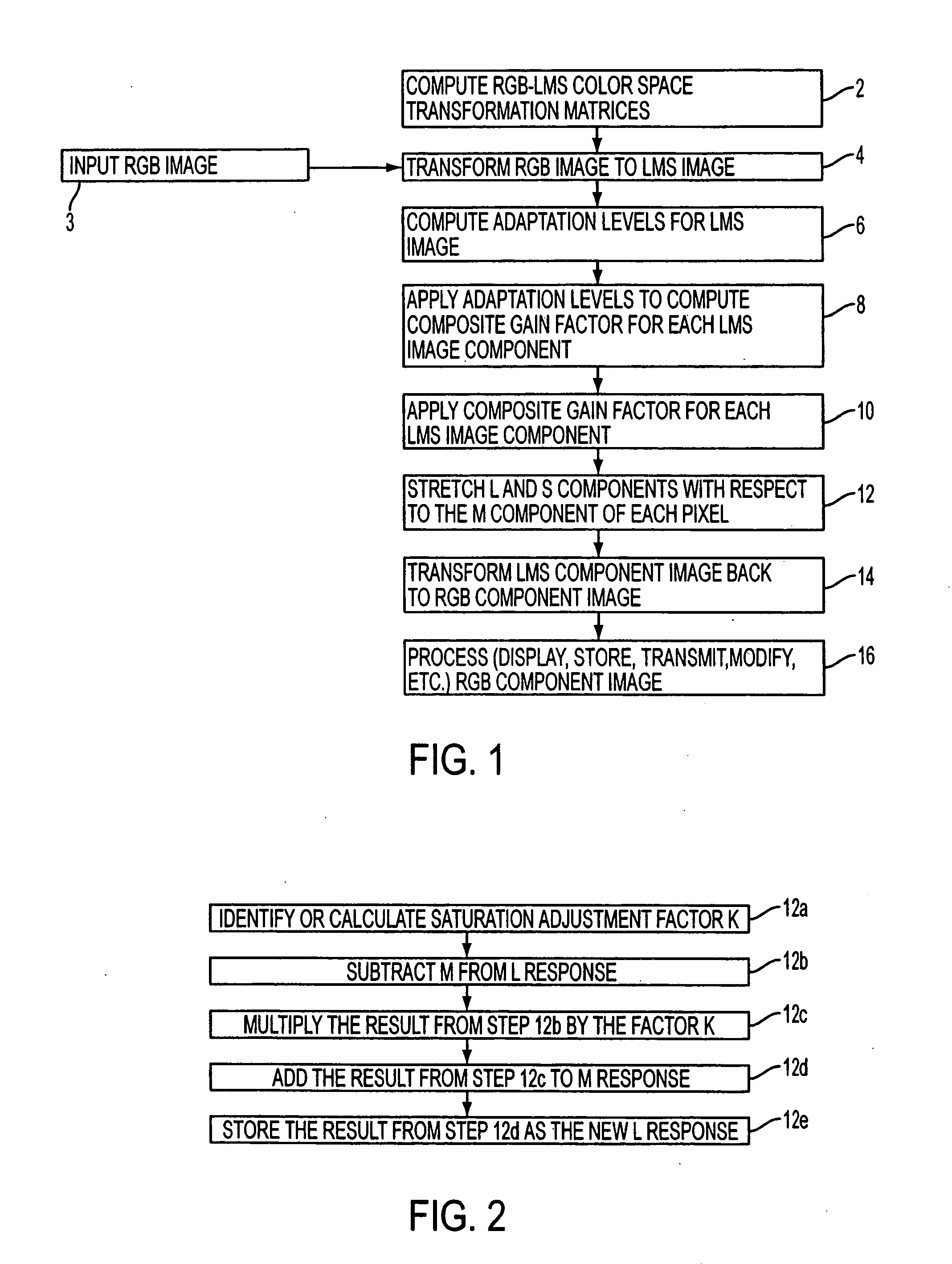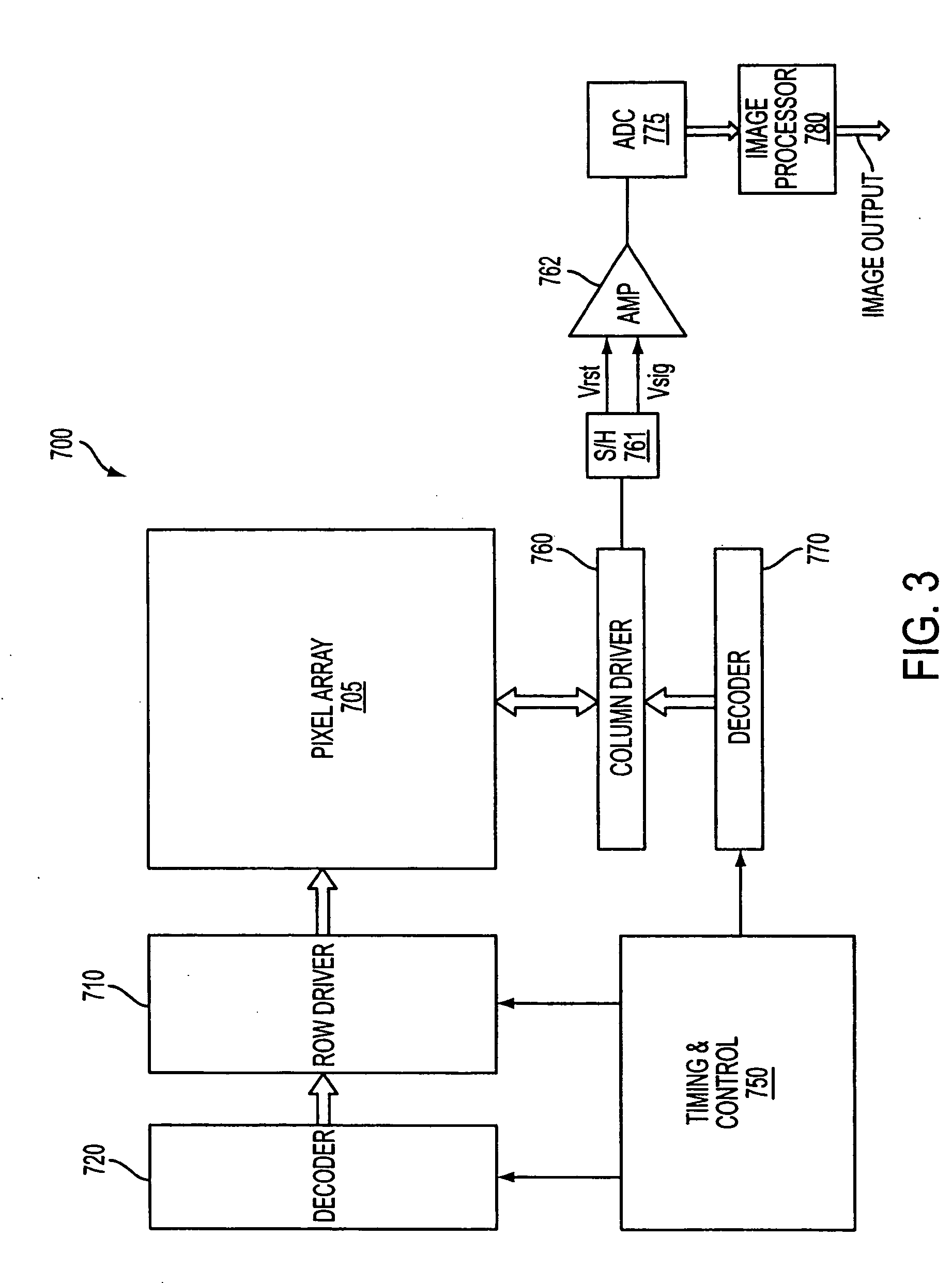Simple and robust color saturation adjustment for digital images
a color saturation adjustment and digital camera technology, applied in the field of digital image sensors, can solve the problems of non-linear behavior such as perceived hue changes, non-uniformity of saturation, and inability to adjust saturation according to these and other known methods
- Summary
- Abstract
- Description
- Claims
- Application Information
AI Technical Summary
Benefits of technology
Problems solved by technology
Method used
Image
Examples
Embodiment Construction
[0019] In the following description, an exemplary imager color space will be described as an RGB color space; however, other color imaging protocols could be used in the invention, including, for example, a subtractive CMY (cyan, magenta, yellow) color space.
[0020]FIG. 1 illustrates the processing by which the saturation of image sensor data may be adjusted according to an exemplary embodiment of the invention. The method begins by converting image sensor RGB images to LMS component images. This transformation preferably includes the steps of computing RGB-LMS color space transformation matrices (step 2) and transforming an RGB component image input (step 3) to an LMS component images (step 4). These steps are described in full in U.S. patent application Ser. No. 10 / 228,947 to Hu (Pub. No. 2004 / 0042653 A1) (hereinafter the “'947 application”), which is hereby incorporated by reference in its entirety.
[0021] Next, an adaptation model is determined for each of the long (L), medium (...
PUM
 Login to View More
Login to View More Abstract
Description
Claims
Application Information
 Login to View More
Login to View More - R&D
- Intellectual Property
- Life Sciences
- Materials
- Tech Scout
- Unparalleled Data Quality
- Higher Quality Content
- 60% Fewer Hallucinations
Browse by: Latest US Patents, China's latest patents, Technical Efficacy Thesaurus, Application Domain, Technology Topic, Popular Technical Reports.
© 2025 PatSnap. All rights reserved.Legal|Privacy policy|Modern Slavery Act Transparency Statement|Sitemap|About US| Contact US: help@patsnap.com



